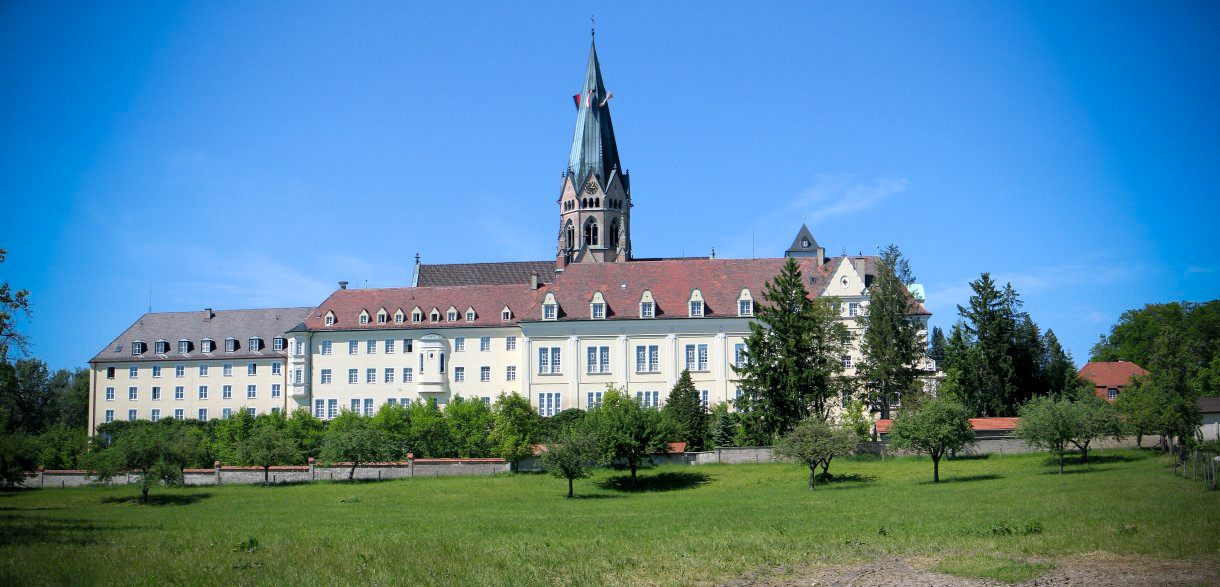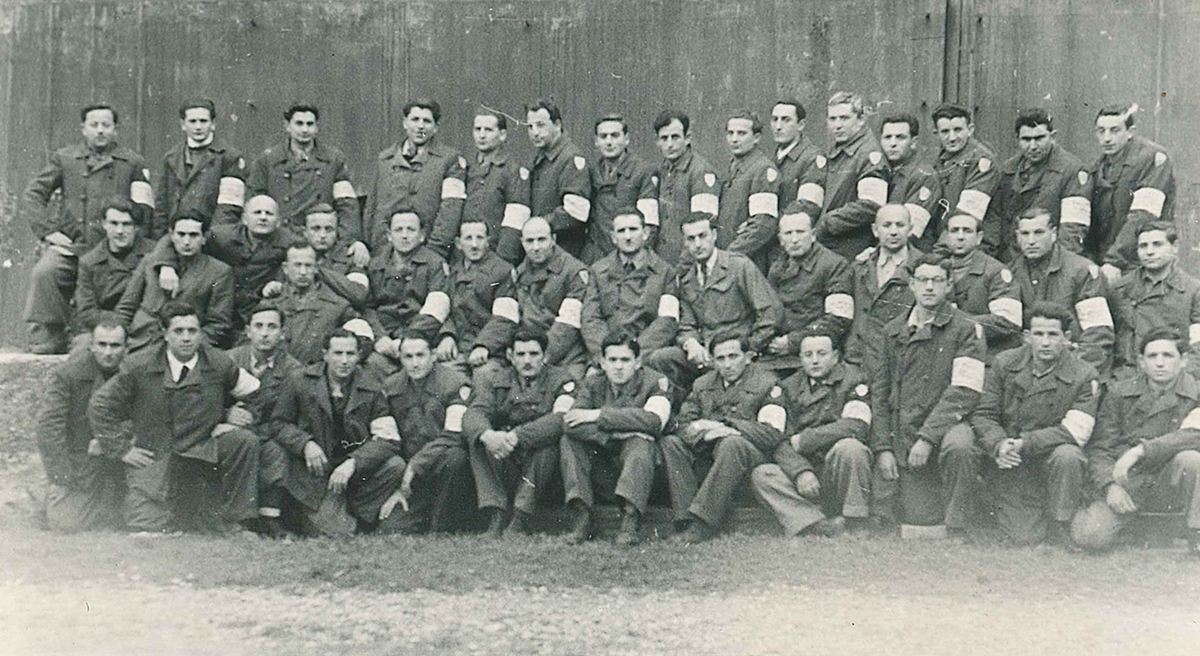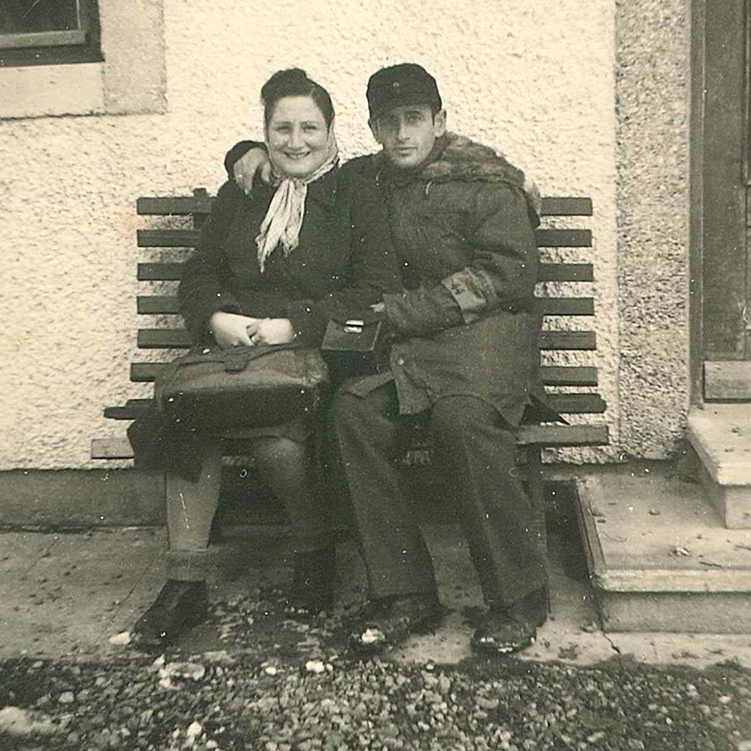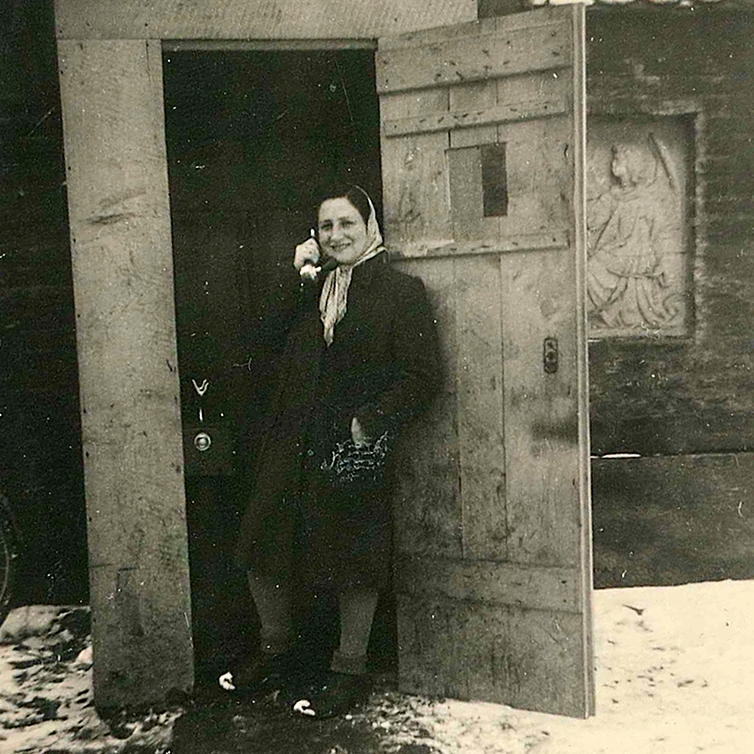Some 450 babies were born at this monastery in the years following the end of the war. Today, the town of Eresing is a small village of 2,000 in the quiet Bavarian countryside, in southern Germany. But right after the end of the Second World War, a monastery located just few miles from this idyllic rural village was home to one of the most overlooked aspects of Holocaust history—American-led displaced person camps.
To understand how a Benedictine monastery became the site of a displaced person camp (facilities within Allied-occupied Germany where Holocaust refugees were temporarily housed in the aftermath of the war), we need to go back to the history of Benedictine monks in the area.
During the 7th century, Eresing was one of the areas that was evangelized by monks of the order of St. Augustine. The brothers built an abbey and a monastic school that soon became one of the main higher-education centers in Western Europe.
In 1884, Andreas Amrhein, a monk from the Beuron Archabbey in the Danube region, was looking for a new site to build a community that could combine the Benedictine lifestyle with missionary work, something he felt was lacking at Beuron.
He initially settled in a different Bavarian town, Reichenbach am Regen, but after finding it too remote, he moved the congregation to Emmin, a small region near Eresing. That’s when “the Ottilien congregation” (after the patron of the monastery, St. Ottilia) was born.

Throughout the years, St. Ottilien Archabbey became a full-scale monastic complex featuring agricultural infrastructure, an infirmary, a guesthouse, and a printing press. The infirmary had cutting-edge equipment such as radiology machines, and it was perhaps for this reason that in 1941 the Nazi secret police decided to occupy the monastery to expand the infirmary and turn it into a military hospital.
In a sort of contorted twist of fate, that Nazi hospital was the reason why St. Ottilien was later chosen as the site for one of the hundreds of displaced persons (DP) camps that were started in Allied-occupied Germany between 1945 to 1947.
St. Ottilien’s Displaced Persons (DP) camp was created in 1945 and in the following three years it welcomed at least 5,000 people, mostly Jewish refugees who called themselves Sh’erit ha-Pletah, “the surviving remnant.” On top of a functioning hospital, mostly managed by Jewish doctors, it also had a school, a police force and a maternity ward. Some 450 babies were born at the monastery in the years following the end of the war.

Last month, St. Ottilien Archabbey, together with the University of Munich and the Jewish Museum of Munich, organized a three-day academic symposium dedicated to this overlooked aspect of the Abbey’s history.
As Atina Grossmann, a professor of history at Cooper Union in New York, told the Smithsonian, historians are not yet sure about the ways in which Holocaust survivors found out about St. Ottilien’s DP camp.
According to a memory shared by Zalman Grinberg, who served as the first Jewish chief doctor of St. Ottilien’s hospital, the DP came together thanks to his initiative and the help of the International Red Cross. Grinberg, a fully trained doctor, had learned about the presence of a hospital at St. Ottilien from another Jewish doctor in Schwabhausen, near the Dachau concentration camp, who had managed to convince local chiefs to house refugees in camps that had hosted German soldiers.
Grinberg then called the chief physician of the St. Ottilien’s military hospital and, pretending to be a member of the International Red Cross, ordered him to take in the survivors. His strategy worked and few days later American troops arranged for the transfer of the first group of Holocaust survivors to the hospital. Grinberg was nominated medical director.
Over the few next months, other refugees started to make their way to St. Ottilien as more and more concentration camps were finally shut down. But as scholars explained during the symposium, most of the people who found shelter at St. Ottilien were actually coming from the Soviet Union, where many Eastern European Jews found refuge during the Nazi regime—another overlooked aspect of Holocaust history.
Many of the refugees reached the DP with illnesses, such as tuberculosis and skin infections, caused by inhuman life conditions inside camps. Unfortunately, some patients could not survive despite the prompt care offered by St. Ottilien doctors and nurses. Today, more than 60 graves belonging to Jewish refugees are found in St. Ottilien’s cemetery, right next to the graveyard reserved for monks.
But the monastery was also the place where many survivors could finally attempt to live again after the collective trauma experience in the previous five years. Few months after arriving at the camp, a group of survivors organized a concert to celebrate their regained freedom, the Liberation concert. And in July of 1945, St. Ottilien hosted a meeting of all liberated Jews from all military zones, who started a committee aimed at defending their rights and assisting their community as it was slowly starting to get back to life. That same year, the monastery’s printing press was used to print the first copy of the “Survivor’s Talmud,” edited with the help of Rabbi Shmuel Abba Snieg.
As the Smithsonian reports, Alec Savicky, whose parents Abram and Sara lived at St. Ottilien after surviving the Holocaust and served as camp’s police officers, was surprised to find photos from his parents’ time at St. Ottilien in which the coupled “looked happy.”

“What I could not understand is why my parents looked so happy in the photos that I have of them from that time,” Savicky told the Smithsonian. “It didn’t make sense to me, because they’d just come out of the camps and I was thinking they should be wasted. How is it that they have smiles on their faces?”
The role played by St. Ottilien monks was also discussed during the three-day conference. According to Dr. Evita Wiecki, a professor of history at the University of Munich, monks were frustrated by not being able to live their religious life during the Nazi occupation. So in way they were also looking for healing and for a way to “come back home.” Assisting the victims of one of the most horrific crimes of history made them feel like they were being faithful to their calling once again.

“Today, we are very proud of this hospital,” Father Cyril Schaefer, the head of St. Ottilien’s publishing house, said at the symposium. “And thinking of the many miracles performed in only a few years, we have to say the suppression of the monastery and its transformation into a hospital was perhaps the most important event in its existence.”








